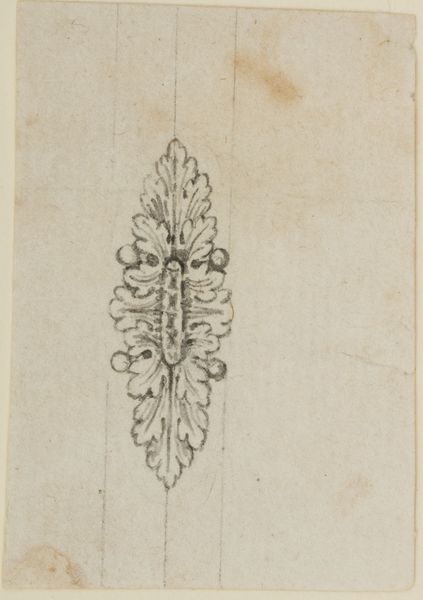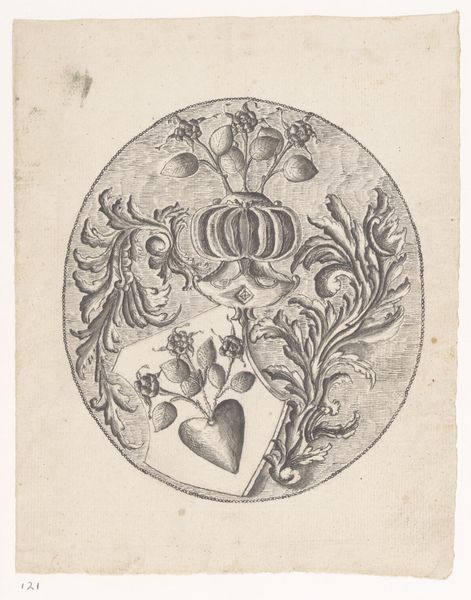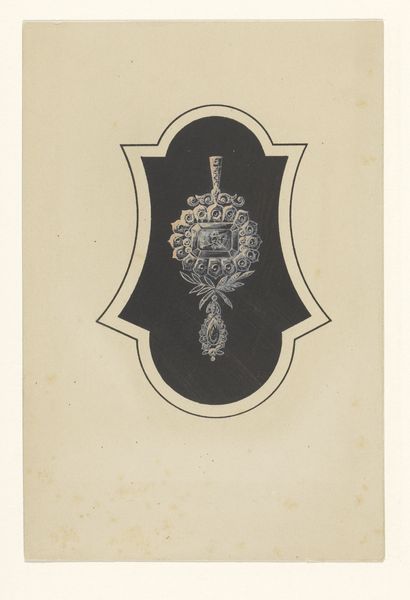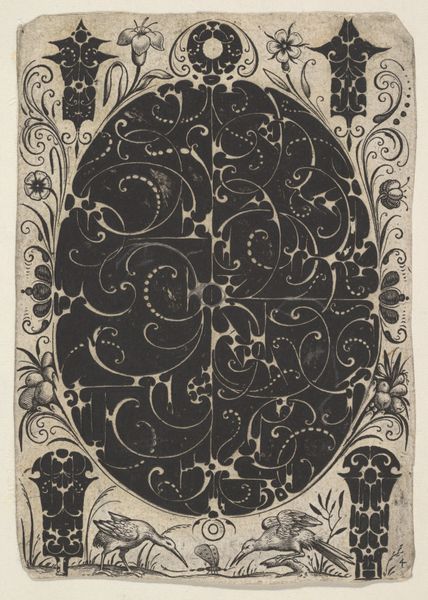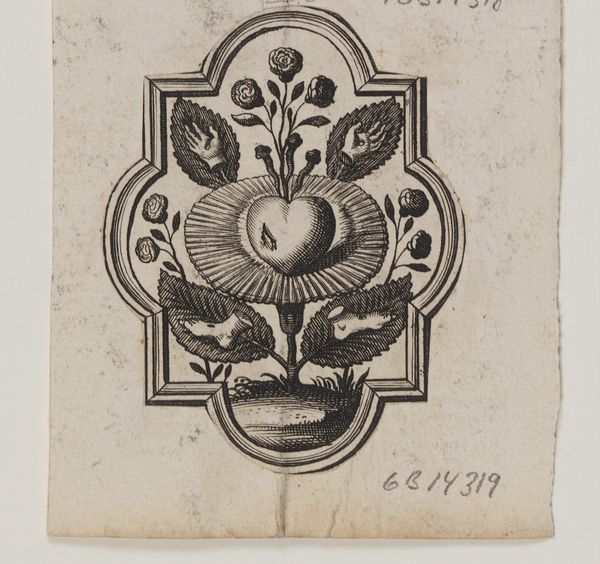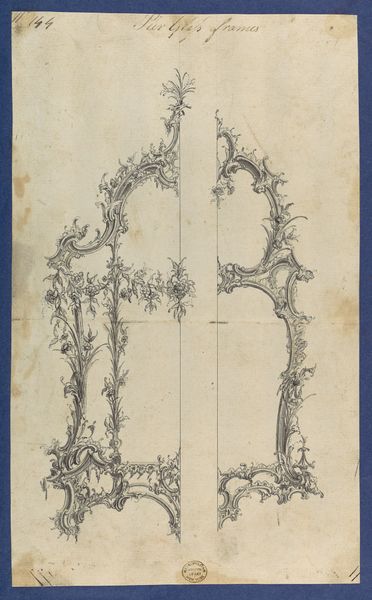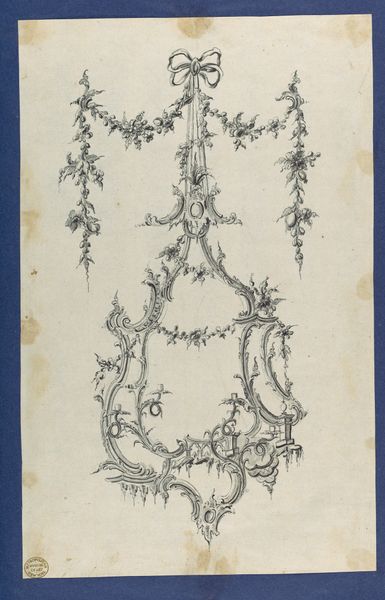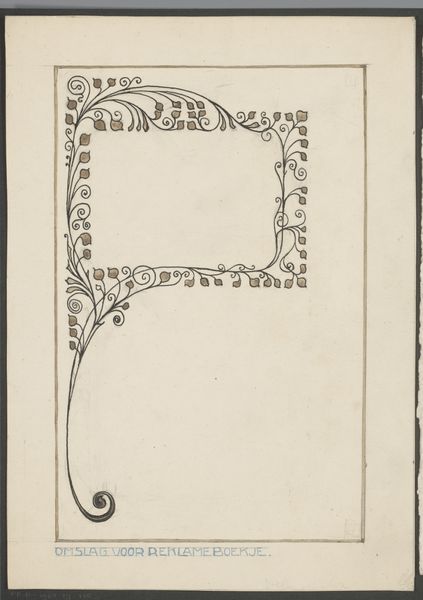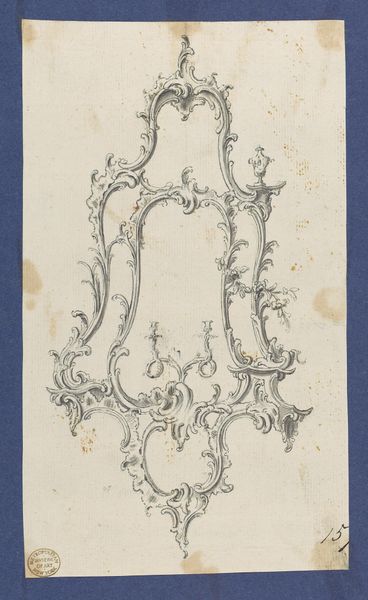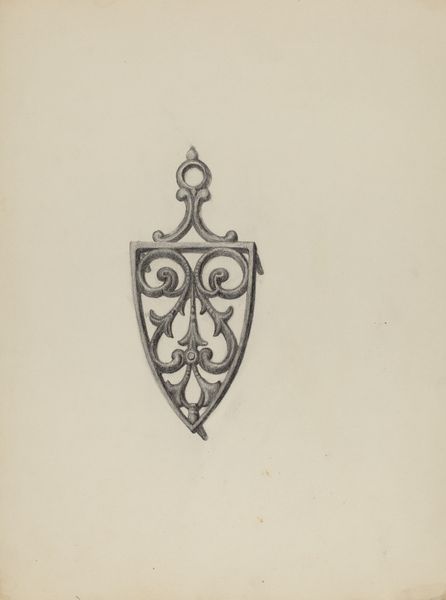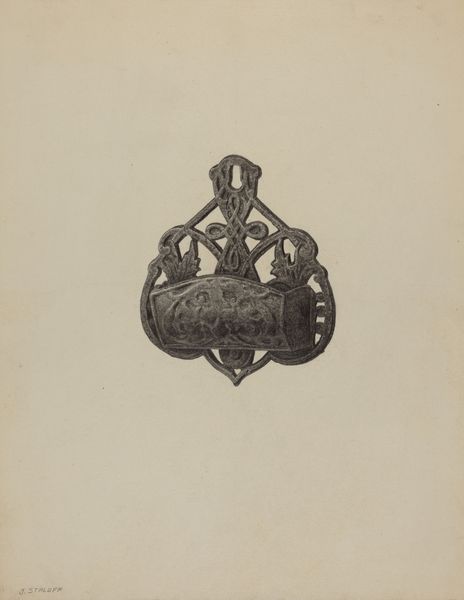
drawing, print, paper, watercolor, ink
#
drawing
# print
#
paper
#
watercolor
#
ink
#
coloured pencil
#
geometric
#
watercolour illustration
#
watercolor
Dimensions: sheet: 4 7/16 x 3 3/4 in. (11.3 x 9.6 cm)
Copyright: Public Domain
Editor: Here we have "Design for the Bow of a Key (?)," an anonymous 19th-century watercolor and ink drawing. It’s delicate, almost like a botanical study combined with ornate metalwork. How do you interpret this work, looking beyond its practical function? Curator: This piece offers a compelling entry point into 19th-century societal structures. Consider the symbolism of the key itself. What did it unlock? Not just literal doors, but access, power, and perhaps, secrets. Given the exquisite design, we can assume this key wasn’t for just any lock. It represents a hierarchy of access, where artistry denotes status. How might we view this in relation to the Industrial Revolution, when notions of craftsmanship and class were rapidly evolving? Editor: That's fascinating. It's easy to overlook the socioeconomic implications in a simple design sketch. So, you're saying the key transcends its everyday use and becomes a marker of privilege? Curator: Precisely. And that ornamental design? It reinforces that privilege. This drawing, therefore, subtly critiques a system of built-in inequalities. Now, who held these keys, literally and figuratively? To understand that is to understand power dynamics of the time, often along lines of gender and class. This isn’t just about aesthetics; it’s about social architecture rendered in ink and watercolor. Editor: It makes you wonder what kinds of power it unlocked, and for whom. I definitely see this artwork in a new light now. Curator: Art reveals how objects, even the most functional ones, become imbued with meaning, reflecting and reinforcing cultural narratives.
Comments
No comments
Be the first to comment and join the conversation on the ultimate creative platform.

